
[057] Brassica napus, Oilseed Rape
Introduction
Brassica napus napus, Oilseed Rape or Rapeseed, is a cultivated crop now widespread in England. In places it turns the countryside yellow with its flowers in Summer.
Brassica napus is a polyploid hybrid between Brassica oleracea (cabbage, broccoli, cauliflower, kale, Brussels sprouts and other vegetable varieties) and Brassica rapa (turnip, Chinese cabbage and other varieties). It has two subspecies – B napus napus, Oilseed Rape and B napus rapifera, the swede (also known in the USA as rutabaga or yellow turnip.)
[Don’t worry, there won’t be a test later.]
It has been cultivated for thousands of years.
Taxonomy
Kingdom – Plants
Division – Vascular Plants
Class – Flowering Plants
Order – Brassicales
Family – Brassicaceae (Mustard and Cabbage)
Genus – Brassica
Species – Brassica napus
Subspecies Scientific Name – Brassica napus napus
See below for cultivated varieties
Name
The name ‘rape’ comes from the turnip plant, Brassica rapa. WIkipedia calls this crop Rapeseed but I have always known it as Oilseed Rape. It is the third largest World source of vegetable oil from its seeds.
Brassica is Latin for cabbage or cauliflower. Napus is the Latin for turnip or rapeseed. Latin purists might wonder why Brassica is feminine and napus is masculine, but see Names.
Crops
I have included some domestic animals and will include some cultivated crops. They date from several thousand years ago so their origins may be unclear. After such long periods of cultivation, vegetable crops have many different established varieties that may be very different to the original wild plants.
Brassica
Many species of Brassica are well established crops and all parts of the plants can be eaten, particularly the roots, leaves and seeds. Several varieties of mustard are included within Brassica.
Triangle of U
I have to mention the ‘Triangle of U,’ but first you need to know about polyploidy. It’s to do with having more than the expected number of chromosomes.
Organisms in general all have a number of paired chromosomes. They are called ‘diploid’. Humans have 46 chromosomes in 23 pairs (including one pair of sex chromosomes.) Plants in general have about ten pairs. In sexual reproduction the chromosomes of the parents, (which determine what the offspring will be) combine, mix and separate so that the new organism gets half of the information in its chromosomes from one parent and half from the other one.
Some plants have arisen naturally having sets of four chromosomes, instead of pairs of chromosomes. Bread wheat even has six sets of 7 so it has 42 chromosomes where its ancestor plant had just 14. These are called polyploid.
Long ago there were three species of diploid Brassica – B nigra (Black Mustard); B rapa (Turnip and other varieties) and B oleracea (Cabbage etc.) Somehow each pair formed a polyploid hybrid species. B juncea (Indian Mustard) is a hybrid between B nigra and B rapa. B carinata is a hybrid between B nigra and B oleracea.
And B napus is a hybrid between B rapa and B oleracea. All three of these hybrid species contain two pairs of chromosomes from each of the original species. The following diagram may (or may not) make it clearer to you.
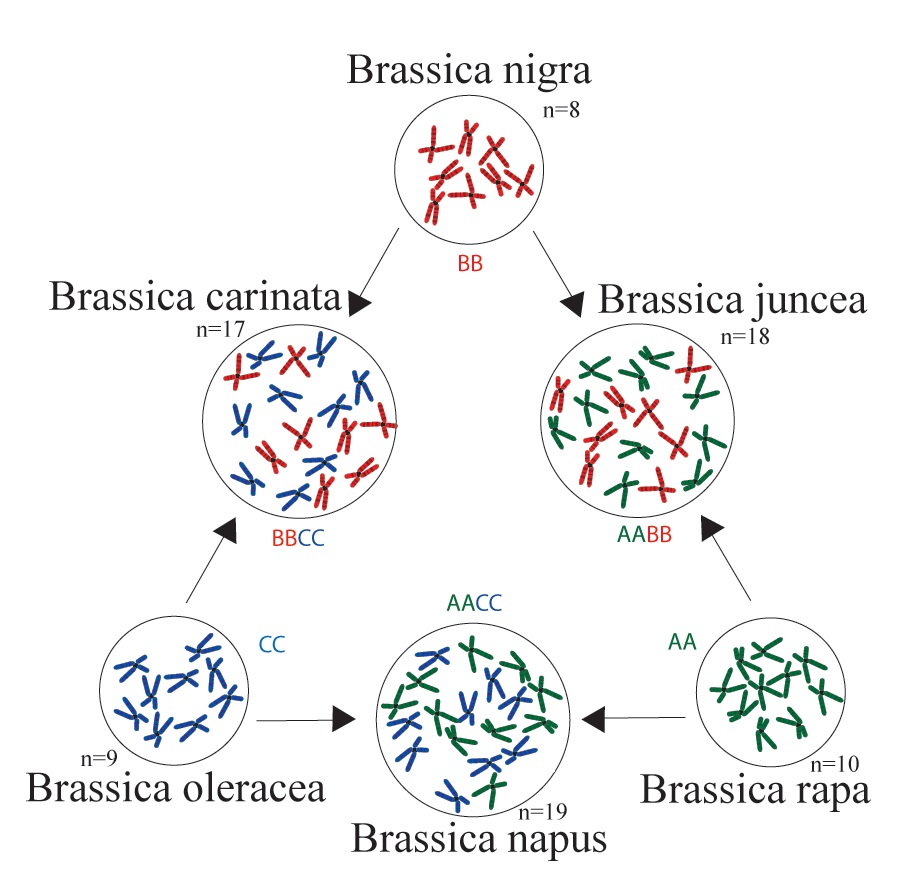
These hybrids are not the results of modern science. They all happened long before the species were domesticated.
[You were wondering why it’s called the Triangle of U. Well, the theory was first published by Woo Jang-choon, a Korean-Japanese botanist, writing under the Japanized name Nagahuru U.]
Description
The Oilseed Rape plant grows to a height of a metre or more and the top half is just an erect stem covered in bright yellow flowers.
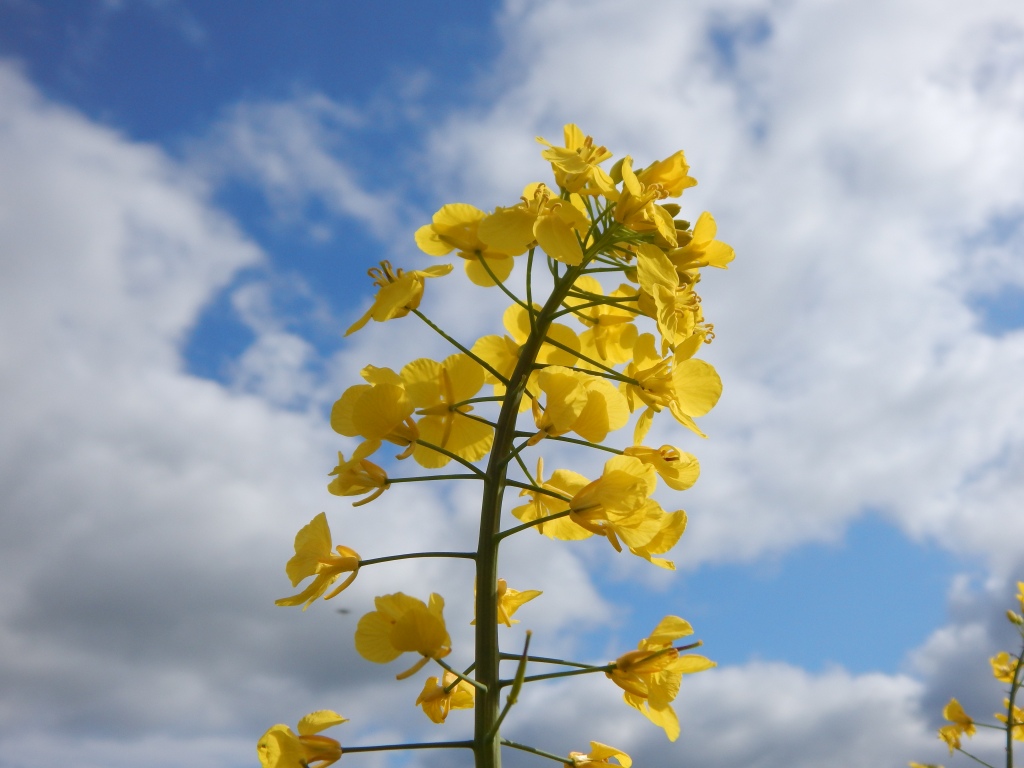

The seed pods are light green and elongated as shown below and in detail.
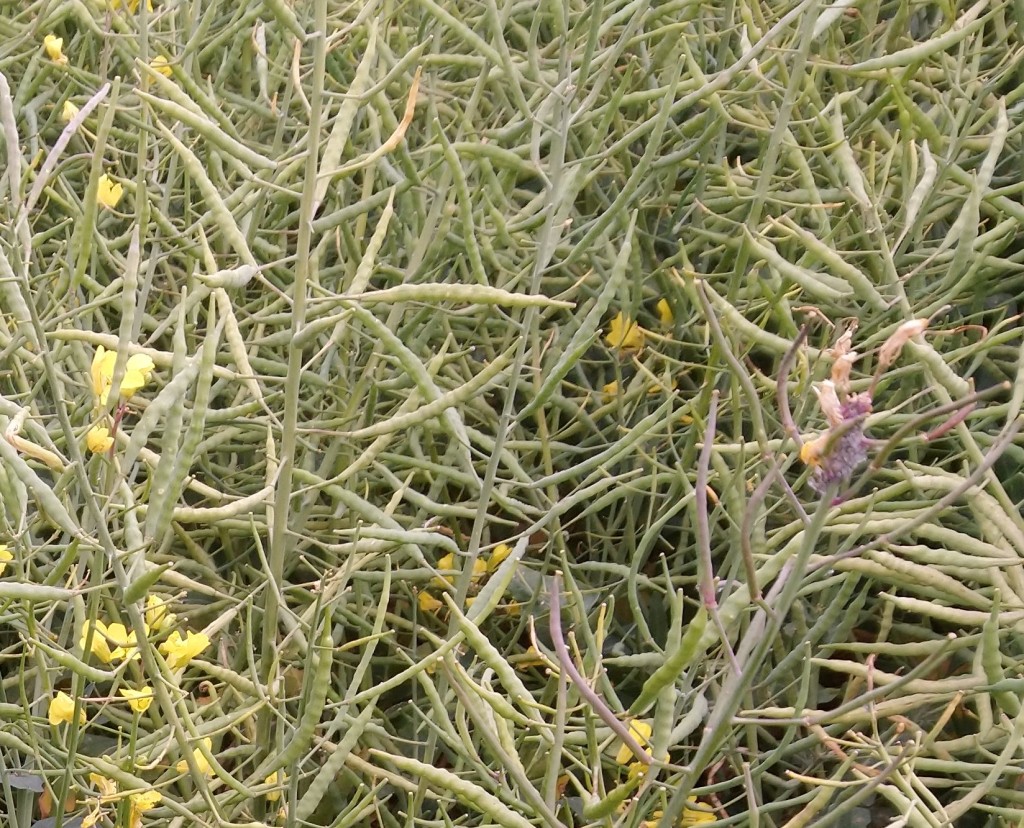

Habitat and use
With modern farming methods, Rapeseed can be grown widely and it is one of the major crops produced in Britain.
It is not easy to get up-to-date statistics but from recent figures Rapeseed comes third in terms of annual arable production (after wheat and potatoes.)
Other Notes
In many places there are extensive field full of Rapeseed and sometimes a footpath will take you through it.
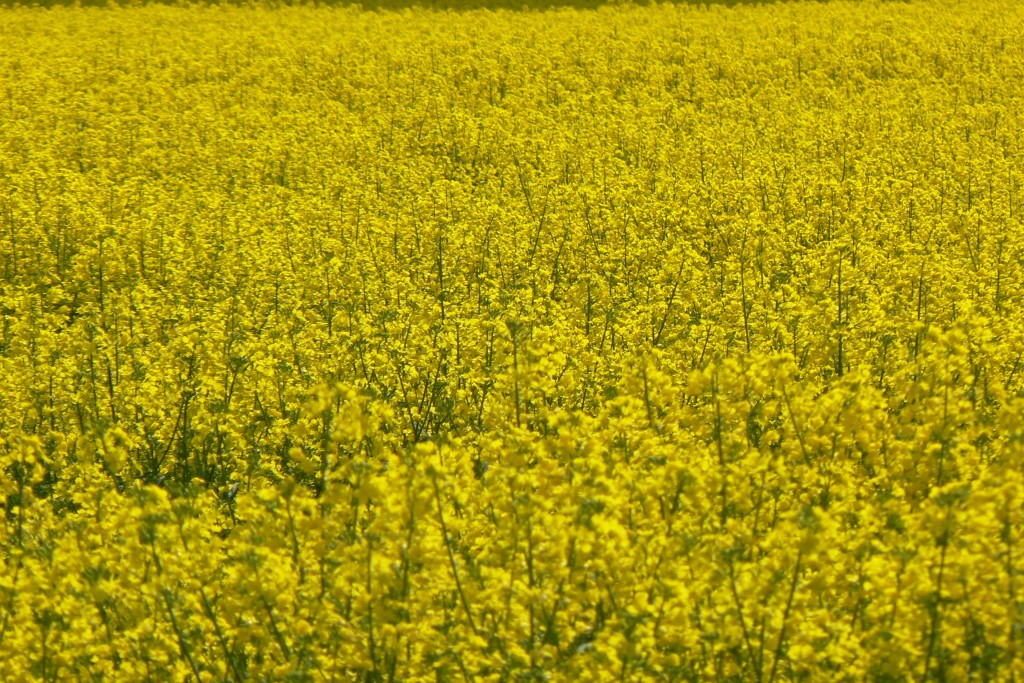
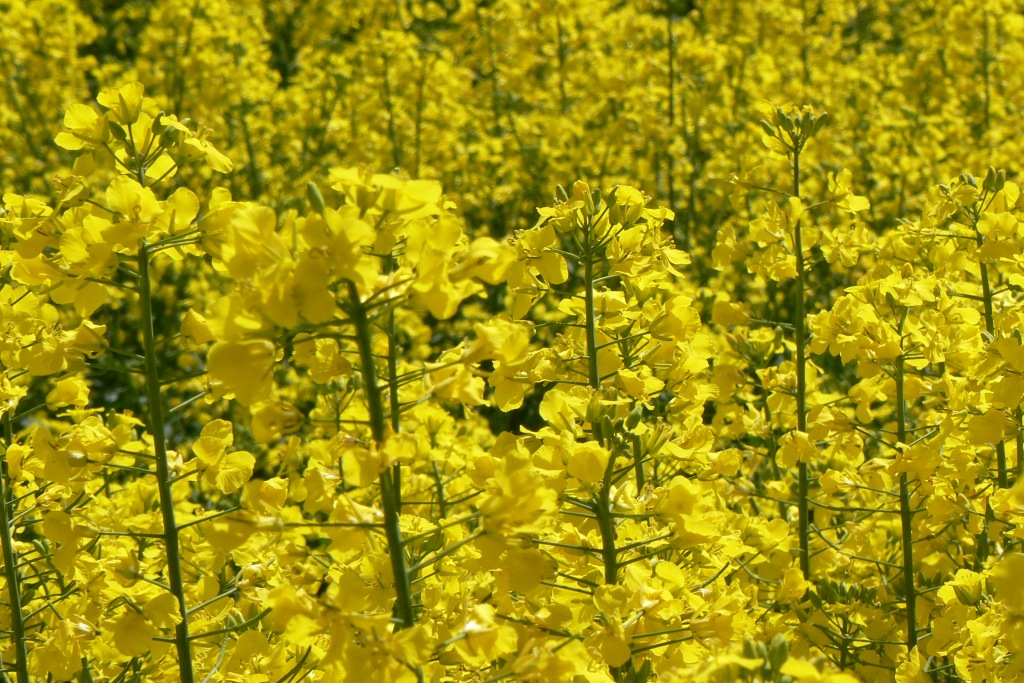
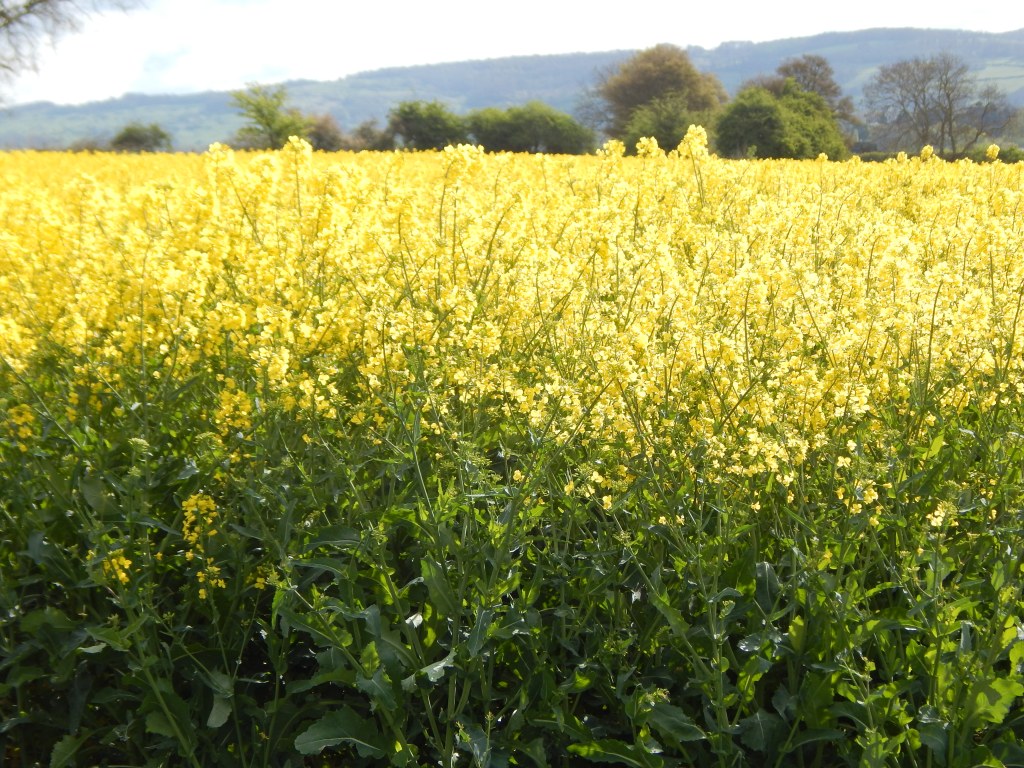

See also
I suppose you may possibly see swedes being grown but this other subspecies of Brassica napus is not a major crop in Britain – either for human consumption or as animal feed.
Look out for some more agricultural crops to come. You can probably guess some of them.
